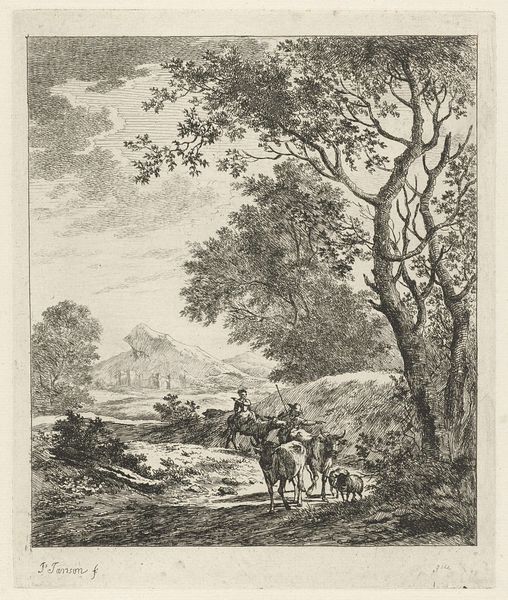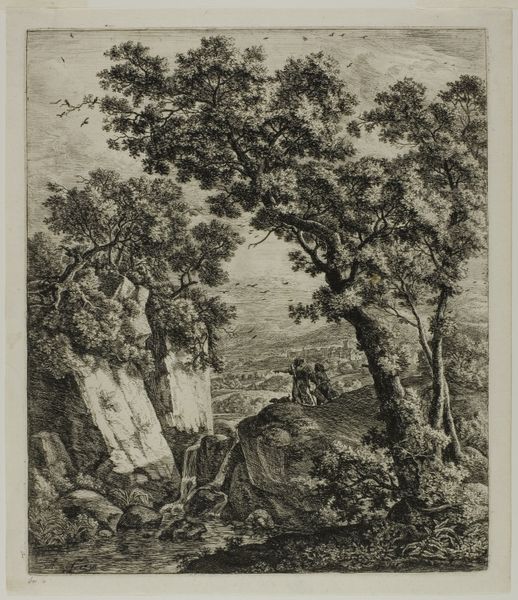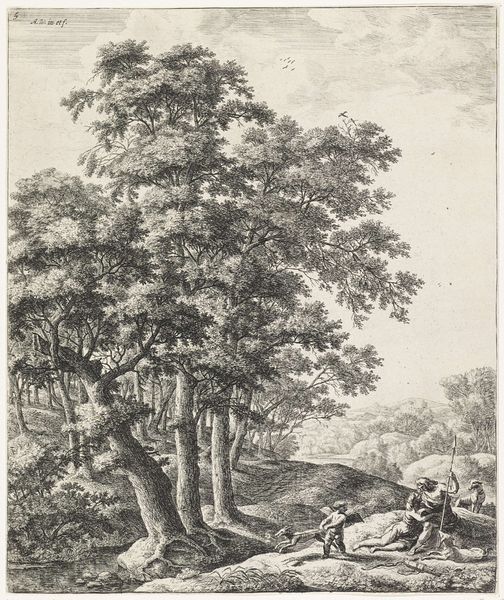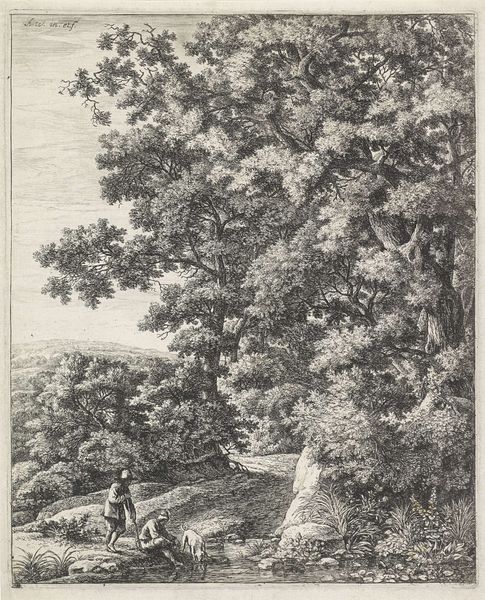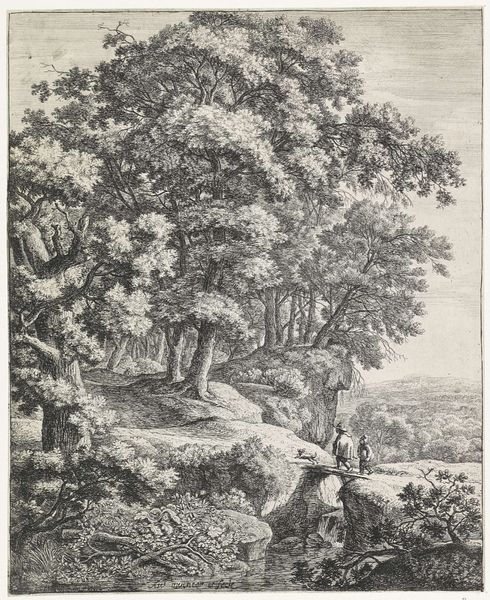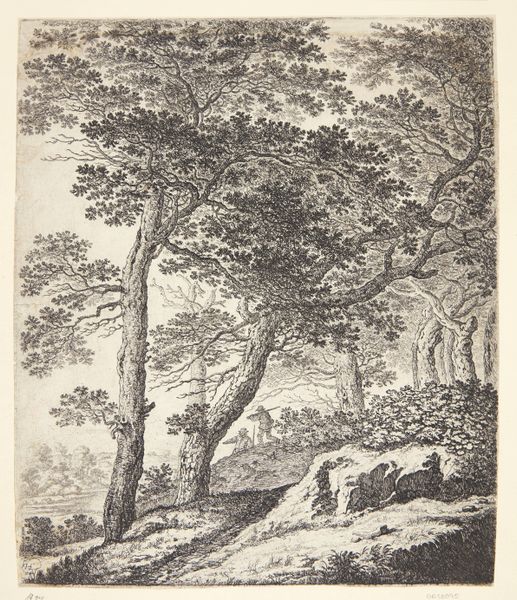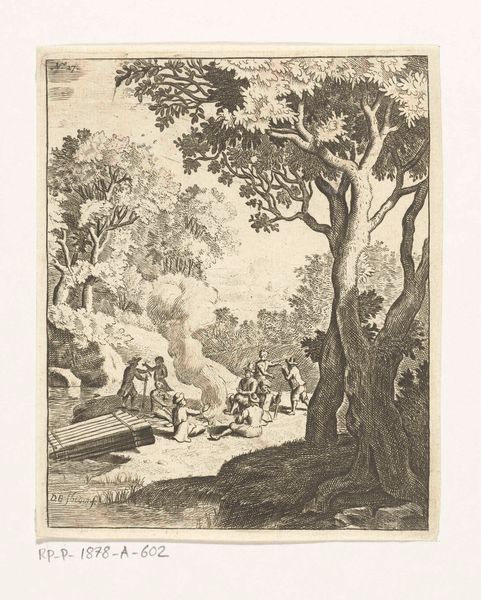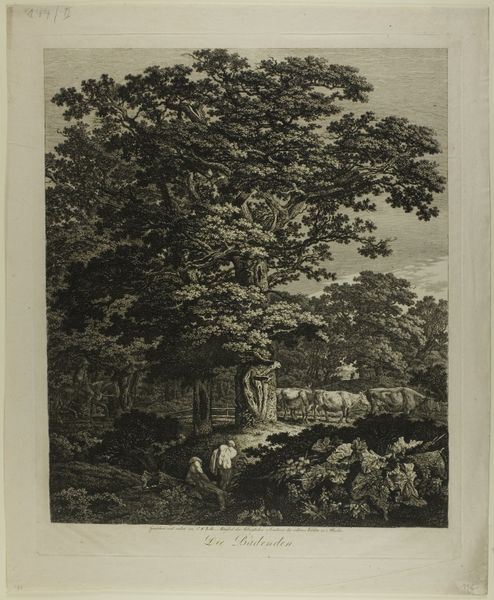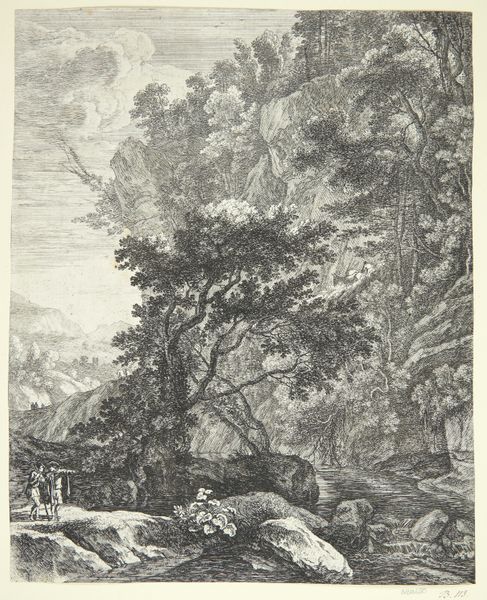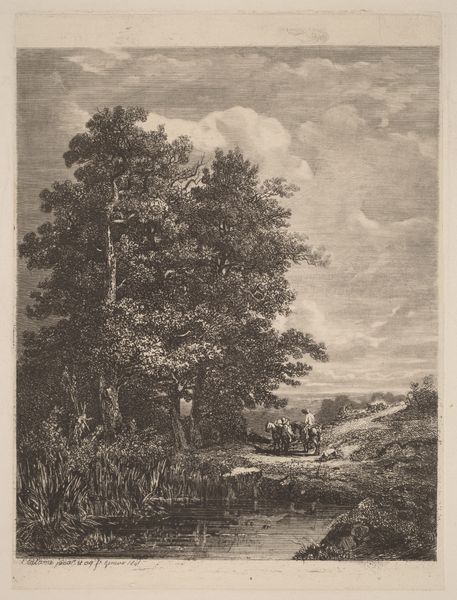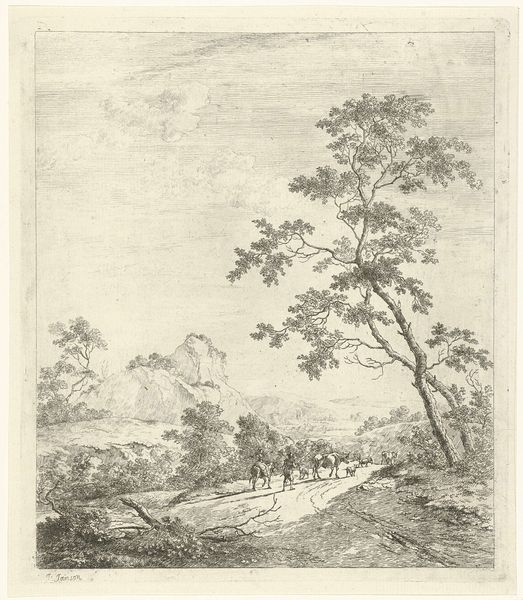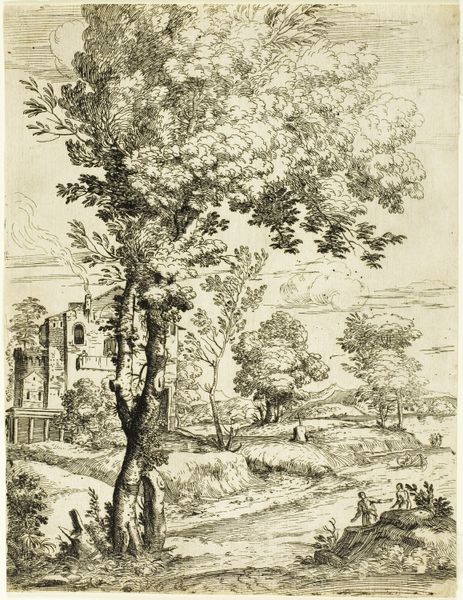
engraving
#
baroque
#
old engraving style
#
landscape
#
figuration
#
limited contrast and shading
#
line
#
history-painting
#
engraving
#
realism
Dimensions: height 257 mm, width 194 mm
Copyright: Rijks Museum: Open Domain
Editor: So, this is "Corisca op de vlucht," or "Corisca on the run," an engraving by Richard van Orley from around 1695-1705. It's a very active scene with figures scrambling around, seemingly in a panic. I’m wondering, what key themes do you notice at play within the symbology used here? Curator: Indeed! Consider the symbolism inherent in the very act of fleeing. What primal fear does that trigger, what narrative of persecution and survival? In Baroque art, heightened emotional states are externalized through gesture and composition, a concept rooted in classical rhetoric, where specific poses convey emotions – think of it as a visual language understood by educated audiences. Are we looking at a particular story, perhaps with deeper significance related to religious or political conflicts? Editor: That’s fascinating! I hadn’t thought about the poses as language itself. Are you saying the symbols relate to what the public already knows, or they are clues we are meant to unlock? I notice, for instance, the ruined architecture in the background. Curator: Excellent observation. Ruins in this period often function as "vanitas" symbols, alluding to the transience of worldly power. This architectural detail may suggest a critique of the established order or the fragility of Corisca’s world. Consider the forest—a traditional symbol of danger but also of purification. Does the dog at Corisca's heel perhaps offer a symbol of fidelity, offering reassurance within this uncertain scene? What cultural myths might connect her to such imagery, what cultural narrative is reinforced through her experience? Editor: The idea that even landscape elements might carry symbolic weight makes me want to rethink my entire approach to understanding historical art. Thank you! Curator: Indeed! By understanding what has survived culturally, both visually and conceptually, we gain insights not only into this one piece, but into cultural patterns themselves.
Comments
No comments
Be the first to comment and join the conversation on the ultimate creative platform.
